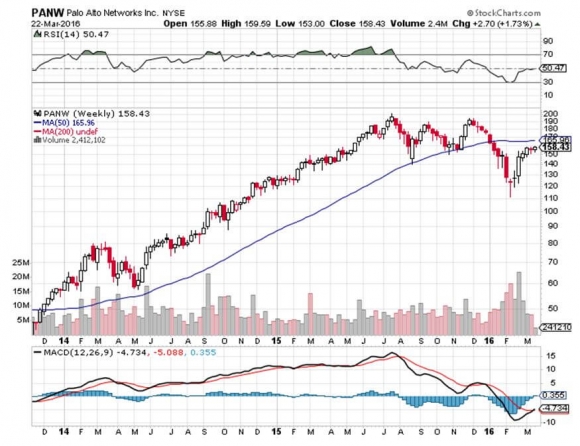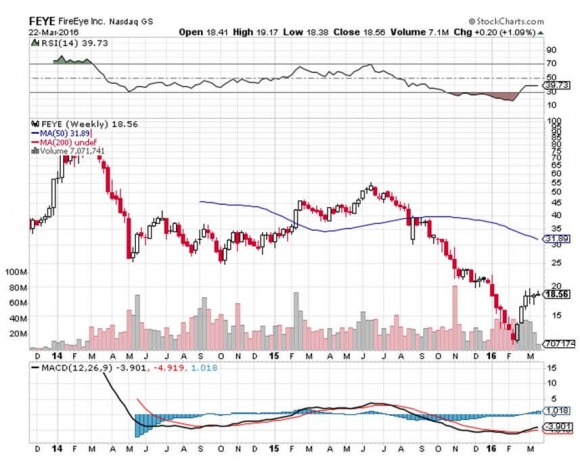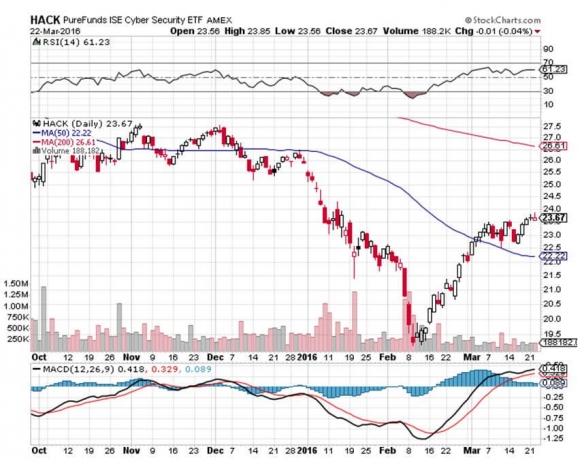
Global Market Comments
March 25, 2016
Fiat Lux
Featured Trade:
(APRIL 18 MIAMI GLOBAL STRATEGY LUNCHEON),
(MARCH 30 GLOBAL STRATEGY WEBINAR),
(A DAY WITH TOM FRIEDMAN OF THE NEW YORK TIMES),
(TESTIMONIAL)
Global Market Comments
March 24, 2016
Fiat Lux
Featured Trade:
(APRIL 15 HOUSTON STRATEGY LUNCHEON INVITATION),
(STOCK PICKS FOR A REPUBLIC WIN IN NOVEMBER),
(CVX), (XOM), (COP), (BP), (RIG), (DO), (BTU), (SHAW), (CCJ), (CHK), (DVN), (NOC), (GD), (ZMH), (UNH), (HUM), (PFE), (AAPL),
(UNP), (BAC)
(CYBER SECURITY IS ONLY JUST GETTING STARTED),
(PANW), (HACK)
Chevron Corporation (CVX)
Exxon Mobil Corporation (XOM)
ConocoPhillips (COP)
BP p.l.c. (BP)
Transocean Ltd. (RIG)
Diamond Offshore Drilling, Inc. (DO)
Peabody Energy Corporation (BTU)
Cameco Corporation (CCJ)
Chesapeake Energy Corporation (CHK)
Devon Energy Corporation (DVN)
Northrop Grumman Corporation (NOC)
General Dynamics Corporation (GD)
Zimmer Biomet Holdings, Inc. (ZMH)
UnitedHealth Group Incorporated (UNH)
Humana Inc. (HUM)
Pfizer Inc. (PFE)
Apple Inc. (AAPL)
Union Pacific Corporation (UNP)
Bank of America Corporation (BAC)
Palo Alto Networks, Inc. (PANW)
PureFunds ISE Cyber Security ETF (HACK)
It looks like the cyber security sector is about to take off like a rocket once again. There could be another 25%-50% in it this year.
The near destruction of Sony (SNE) by North Korean hackers last November has certainly put the fear of God into corporate America. Apparently, they have no sense of humor whatsoever north of the 38th parallel.
As a result, there is a generational upgrade in cyber security underway, with many potential targets boosting spending by multiples.
It's not often that I get a stock recommendation from an army general. However that's exactly what happened the other day when I was speaking to a three star about the long-term implications of the Iran peace deal.
He argued persuasively that the world will probably never again see large-scale armies fielded by major industrial nations. Wars of the future will be fought online, as they have been, silently and invisibly, over the past 15 years.
All of those trillions of dollars spent on big ticket, heavy metal weapons systems are pure pork designed by politicians to buy voters in marginal swing states.
The money would be far better spent where it is most needed, on the cyber warfare front. Needless to say, my friend shall remain anonymous.
The problem is that when wars become cheaper, you fight more of them, as is the case with online combat.
A little known fact is that during the Bush administration, the Chinese military downloaded the entire contents of the Pentagon's mainframe computers at least seven times.
This was a neat trick because these computers were in stand alone, siloed, electromagnetically shielded facilities not connected to the Internet in any way.
In the process, they obtained the designs of all of out most advanced weapons systems, including our best nukes. And what have they done with this top-secret information?
Absolutely nothing.
Like many in senior levels of the US military, the Chinese have concluded that these weapons are a useless waste of valuable resources. Far better value for money are more hackers, coders and servers, which the Chinese have pursued with a vengeance.
You have seen this in the substantial tightening up of the Chinese Internet through the deployment of the Great Firewall, which blocks local access to most foreign websites.
Try sending an email to someone in the middle Kingdom with a gmail address. It is almost impossible. This is why Google (GOOG) closed their offices there years ago.
My awareness of this comes from several Chinese readers complaining to me that they are unable to open my Trade Alerts or access their foreign online brokerage accounts.
As a member of the Joint Chiefs of Staff recently told me, "The greatest threat to national defense is wasting money on national defense."
If wars are now being fought online, then investing in national defense has actually come to mean investing in cyber security.
And although my brass-hatted friend didn't mention the company by name, the implication was that I need to go out and buy Palo Alto Networks (PANW) right now.
Palo Alto Networks, Inc. is an American network security company based in Santa Clara, California just across the water from my Bay Area office. The company's core products are advanced firewalls designed to provide network security, visibility and granular control of network activity based on application, user, and content identification.
Palo Alto Networks competes in the unified threat management and network security industry against Cisco (CSCO), FireEye (FEYE), Fortinet (FTNT), Check Point (CHKP), Juniper Networks (JNPR), and Cyberoam, among others.
The really interesting thing about this industry is that there are no real losers. That's because companies are taking a layered approach to cyber security, parceling out contracts to many of the leading firms at once, looking to hedge their bets.
To say that top management has no idea what these products really do would be a huge understatement. Therefore, they buy all of them.
This makes a basket approach to the industry more feasible than usual. You can do this through buying the $435 million capitalized PureFunds ISE Cyber Security ETF (HACK), which boasts Cyberark Software (CYBR), Infoblox (BLOX) and FireEye (FEYE) as its three largest positions. (HACK) has been a hedge fund favorite since the Sony attack.
For more information about (HACK), please click here: http://www.pureetfs.com/etfs/hack.html.
And don't forget to change your password.
While the Diary of a Mad Hedge Fund Trader focuses on investment over a one week to six-month time frame, Mad Day Trader, provided by Bill Davis, will exploit money-making opportunities over a brief ten minute to three day window. It is ideally suited for day traders, but can also be used by long-term investors to improve market timing for entry and exit points. Read more
Global Market Comments
March 23, 2016
Fiat Lux
SPECIAL WINNING OPTIONS TRADING ISSUE
Featured Trade:
(APRIL 25th CHICAGO GLOBAL STRATEGY LUNCHEON),
(HOW TO RELIABLY PICK A WINNING OPTIONS TRADE)
Global Market Comments
March 22, 2016
Fiat Lux
Featured Trade:
(APRIL 22 NEW YORK STRATEGY LUNCHEON),
(THE HARD TRUTH BEHIND SELLING IN MAY),
(NOTICE TO MILITARY SUBSCRIBERS)
Followers of my Trade Alert service have watched me shrink my book down to only two positions, the smallest of the year.
That?s because I am a big fan of buying straw hats in the dead of winter and umbrellas in the sizzling heat of the summer. I even load up on Christmas ornaments every January when they go on sale for ten cents on the dollar. There is a method to my madness.
If I had a nickel for every time I heard the term ?Sell in May and go away,? I could retire.
Oops, I already am retired!
In any case, I thought I would dig out the hard numbers and see how true this old trading adage is.
It turns out that it is far more powerful than I imagined. According to the data in the Stock Trader?s Almanac, $10,000 invested at the beginning of May and sold at the end of October every year since 1950 would be showing a loss today.
Amazingly, $10,000 invested on every November 1 and sold at the end of April would today be worth $702,000, giving you a compound annual return of 7.10%.
This is despite the fact that the Dow Average rocketed from $409 to $18,300 during the same time period, a gain of 44.74 times!
My friends at the research house, Dorsey, Wright & Associates, (click here) have parsed the data even further.
Since 2000, the Dow has managed a feeble return of only 4%, while the long winter/short summer strategy generated a stunning 64%.
Of the 62 years under study, the market was down in 25 May-October periods, but negative in only 13 of the November-April periods, and down only three times in the last 20 years!
There have been just three times when the "good 6 months" have lost more than 10% (1969, 1973 and 2008), but with the "bad six month" time period there have been 11 losing efforts of 10% or more.
Being a long time student of the American, and indeed, the global economy, I have long had a theory behind the regularity of this cycle.
It?s enough to base a pagan religion around, like the once practicing Druids at Stonehenge.
Up until the 1920?s, we had an overwhelmingly agricultural economy. Farmers were always at maximum financial distress in the fall, when their outlays for seed, fertilizer, and labor were the greatest, but they had yet to earn any income from the sale of their crops.
So they had to borrow all at once, placing a large cash call on the financial system as a whole. This is why we have seen so many stock market crashes in October. Once the system swallows this lump, it?s nothing but green lights for six months.
After the cycle was set and easily identifiable by low-end computer algorithms, the trend became a self-fulfilling prophecy.
Yes, it may be disturbing to learn that we ardent stock market practitioners might in fact be the high priests of a strange set of beliefs. But hey, some people will do anything to outperform the market.
It is important to remember that this cyclicality is not 100% accurate, and you know the one time you bet the ranch, it won?t work. But you really have to wonder what investors are expecting when they buy stocks at these elevated levels, over $205 in the S&P 500 (SPY).
Will company earnings multiples further expand from 18 to 19 or 20? Will the GDP suddenly reaccelerate from a 2% rate to the 4% expected by share prices when the daily sentiment indicators are pointing the opposite direction?
I can?t wait to see how this one plays out.











